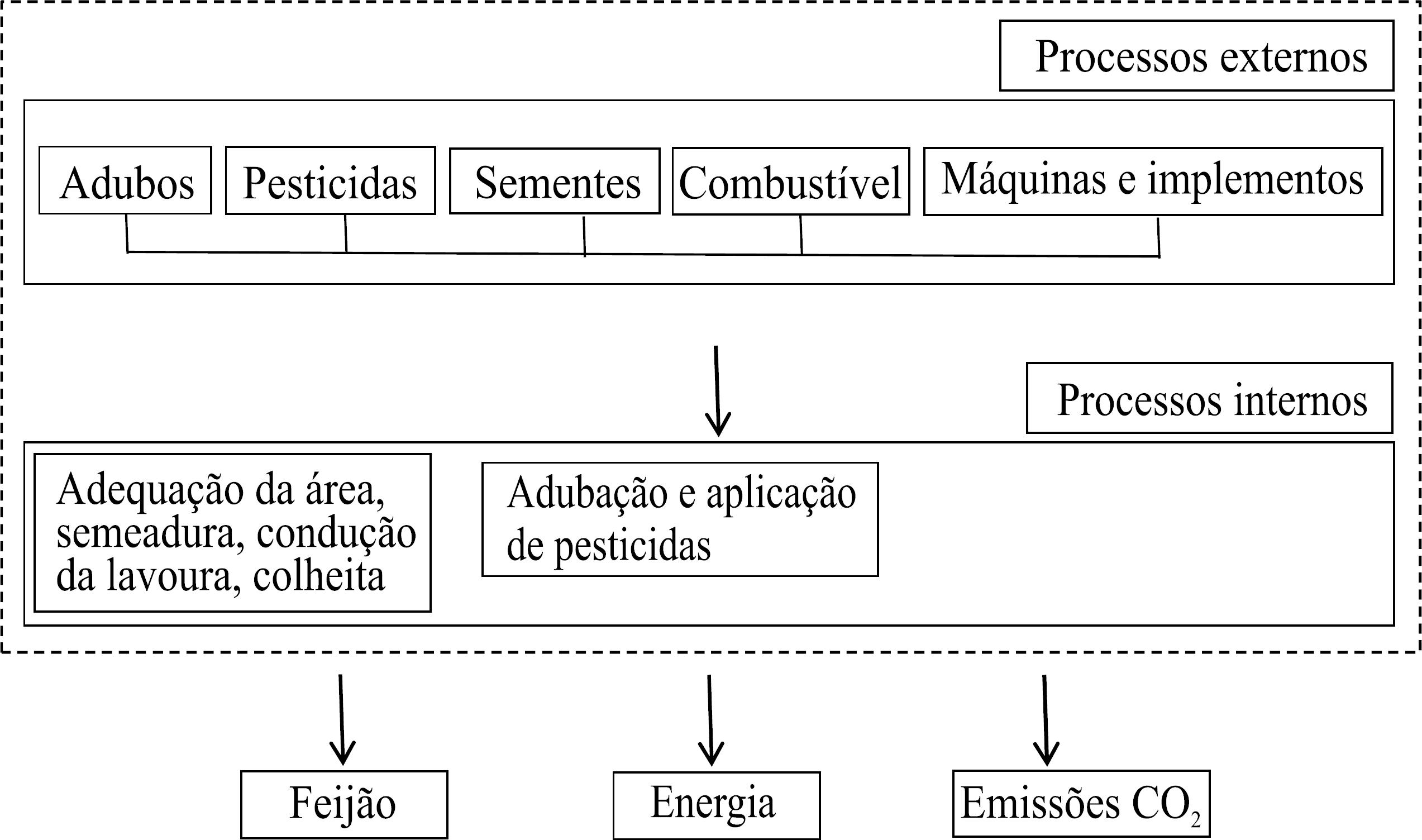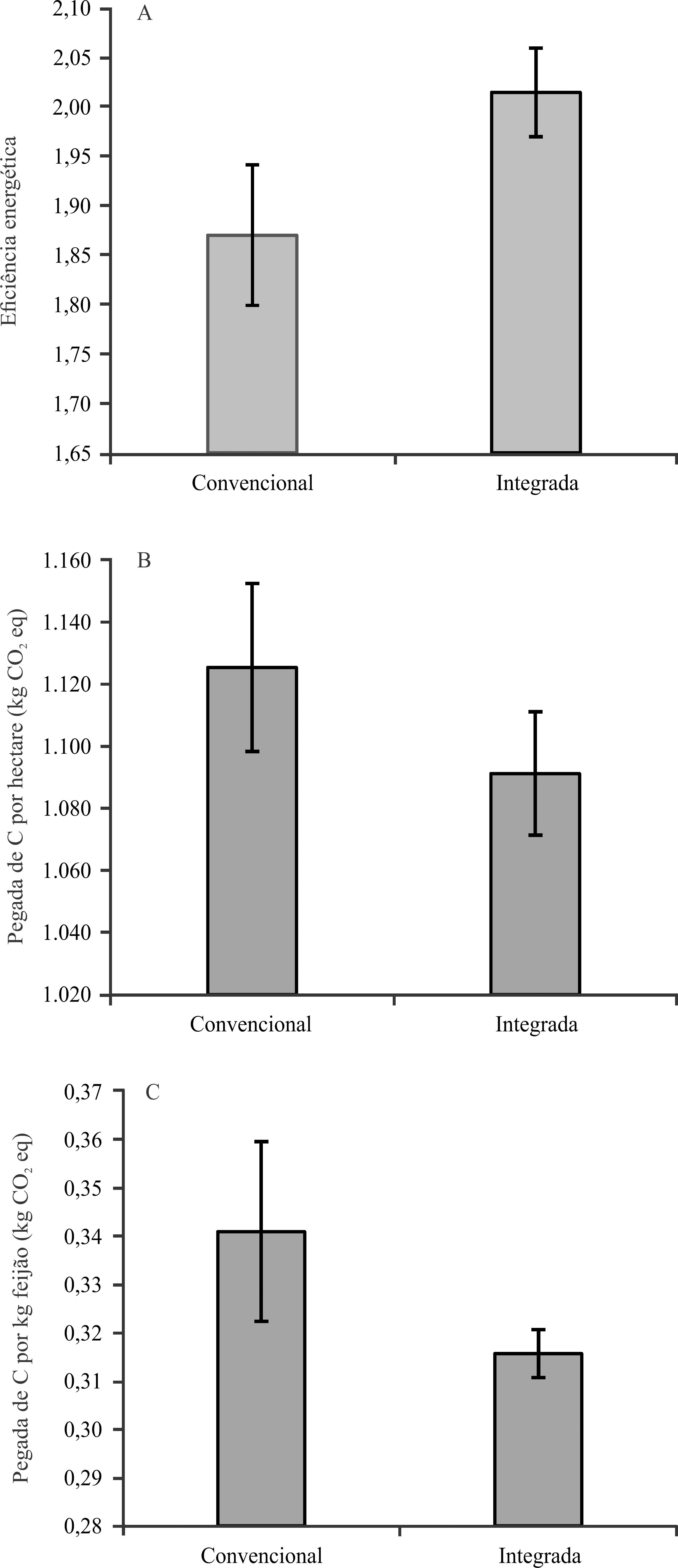Abstract
The objective of this work was to evaluate the contribution of an integrated farming system (PI) of common bean, in comparison with convectional farming, as to energy use, energy efficiency, and carbon footprint, considered from input manufacturing to grain harvest in the farms, excluding transport. Four farms were selected in Cristalina, state of Goiás, Brazil, during the third harvest season of common bean, in 2009. The PI system reduced the average energy use by 3.1%, in comparison with the conventional system. Values ranged from 22,759.9 to 25,518.4 Mg ha-1. Mineral N fertilization with 6,584.0 MJ ha-1, agricultural operations with 5,309.4 MJ ha-1, and irrigation with 4,961.4 MJ ha-1 had the largest participation in energy use. Energy efficiency in PI (2.16) was higher than in the conventional system (2.01). There was no significant difference between the two systems as to carbon footprint per hectare, but carbon footprint per kilogram of yielded bean in PI (0.301 kg CO2-eq kg-1) was significantly lower than in conventional system (0.325 kg CO2-eq kg-1). The improvement of N fertilizer use efficiency by N biological fixation and the rationalization of machinery are the production system components that contributes the most for the reduction of carbon footprint.
Index terms:
Phaseolus vulgaris L; mineral N fertilization; life cycle analysis; energy efficiency; Center pivot irrigation







